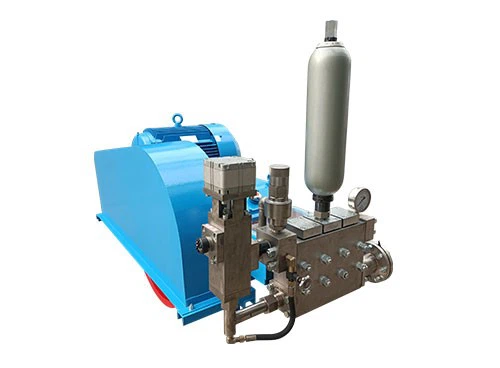1. The suction liquid surface pressure is too low
The installation height is too high: If the installation position of Fire-fighting Pump is too high from the liquid surface, according to the principle of fluid statics, the pressure at the pump inlet will decrease with the increase of height. When the installation height exceeds a certain limit, the pump inlet pressure will be lower than the vaporization pressure of the liquid, thus causing cavitation.
The suction pipe resistance is too large: There are too many valves, elbows, filters and other pipe fittings on the suction pipe, or the inner diameter of the pipe is too small, the inner wall of the pipe is rough, etc., which will increase the resistance of the suction pipe, resulting in excessive pressure loss when the liquid flows in the suction pipe, which reduces the pressure at the pump inlet and causes cavitation.
2. The liquid temperature is too high: The vaporization pressure of the liquid increases with the increase of temperature. When the temperature of the liquid transported by Fire-fighting Pump is too high, its vaporization pressure is close to or exceeds the pressure at the pump inlet, and the liquid is easy to vaporize in the pump, causing cavitation. For example, in the high temperature environment in summer, the water temperature in the fire water pool is high. If the Fire-fighting Pump runs for a long time, this situation may occur.
3. Excessive flow: When the actual flow of the Fire-fighting Pump exceeds its design flow, the flow velocity of the liquid in the pump will increase. According to the Bernoulli equation, the increase in flow velocity will lead to a decrease in pressure, thereby reducing the pressure at the pump inlet, which is easy to cause cavitation.
4. The speed of the pump is too high: The speed of the pump is proportional to the circumferential speed of the impeller. Excessive speed will cause the liquid flow velocity at the impeller inlet to be too high, resulting in a decrease in pressure. At the same time, it will also change the pressure distribution in the pump, increasing the possibility of cavitation.
5. Changes in liquid properties: If the fire-fighting water contains impurities, gases or other additives, it may change the physical properties of the liquid, such as reducing the density of the liquid, increasing the viscosity of the liquid, etc., thereby affecting the flow characteristics of the liquid in the pump, reducing the pressure at the pump inlet, and causing cavitation.

